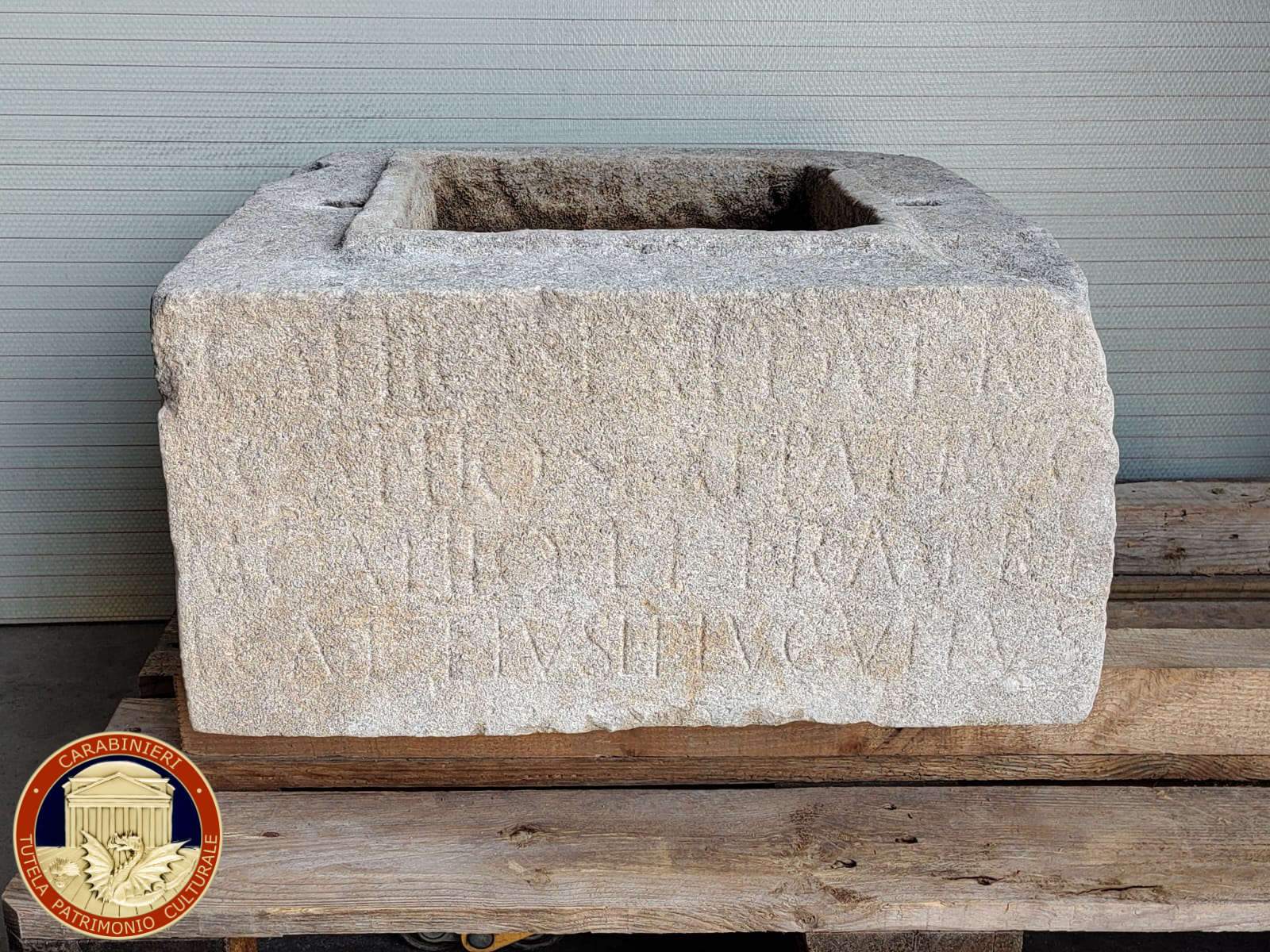This morning at the Museo Nazionale Concordiese in Portogruaro (Venice), the Commander of the Carabinieri Nucleo Tutela Patrimonio Culturale of Venice handed over to the museum director a cassette funerary urn base with a dedicatory inscription. This precious artifact, made of limestone and parallelepipedal in shape with a pseudo-square base, was intended to hold the ashes of the deceased in the upper cavity, originally protected by a lid that is now missing. The urn, a common type in Roman times and also widespread in the Concord area, has a dedicatory inscription engraved in Latin capital letters on the front side, although partially worn and abraded. The text can currently be transcribed as follows:
L(ucio) Attio Sex(ti) f(ilio) patri,
C(aio) Attio Sex(ti) f(ilio) patruo,
[-] Attio L(uci) f(ilio) fratri,
[-] Attius L(uci) f(ilius) Lucullus.
Further investigation will better deepen the understanding of the text. The partially legible inscription reveals a dedication by a member of the Attii family, [-] Attius Lucullus, to three of his male relatives: his father Lucius, his paternal uncle Caius, and his brother, whose praenomen is difficult to read. The Attii family is documented in Altinum by numerous inscriptions, while in Iulia Concordia only the sepulchral monument of a former slave, Attia Corinthis, is known. The paleographic features of the urn, together with the absence of a cognomen, suggest a date between the late first century B.C. and the mid-first century A.D.
The investigation, launched in October 2023 by the Venice TPC Unit under the direction of the Pordenone Public Prosecutor’s Office, stemmed from an inspection by the Soprintendenza Archeologia, Belle Arti e Paesaggio for the Venice Metropolitan Area and the provinces of Belluno, Padua, and Treviso. The urn was found in an area difficult to access, inside a farmhouse in the Concord countryside, part of an inheritance. The urn was seized due to the absence of a valid title from the owner of the cottage, who actively cooperated during the investigation. Investigations revealed that the urn was first found in the late 1960s and early 1970s in an agricultural field near the cottage. Subsequently, it was acquired by other parties, remaining abandoned in the garden of the cottage until it was duly reported to the Padua Superintendency by the new owners of the property.
At the end of the investigation, in January 2024, the Pordenone Public Prosecutor’s Office ordered the release of the urn in favor of the state, and the urn was assigned to the Concordiese National Museum in Portogruaro. Investigative activities involved technical and art-historical examinations carried out by archaeological officials from the Superintendency of Padua and the Veneto Regional Museums Directorate, as well as professors from Ca’ Foscari University in Venice.
Current regulations presume that archaeological property from Italian territory belongs to the state. A private individual wishing to claim ownership of such artifacts must provide proof that they were assigned by the state as a fortuitous discovery award, ceded as compensation for the occupation of real estate, or that they were in possession prior to the enactment of Law No. 364 of June 20, 1909. In addition, alienations and legal acts in violation of protection regulations are null and void.
The recovery of archaeological artifacts represents one of the main activities of the Venice Cultural Heritage Protection Unit, conducted through checks at commercial establishments, reports from scholars and enthusiasts, and cooperation with the Ministry of Culture. The return of these goods to the public heritage allows the collective enjoyment of objects that tell the story of territories and communities.
 |
| Carabinieri deliver precious Roman urn to Concord National Museum |
Warning: the translation into English of the original Italian article was created using automatic tools. We undertake to review all articles, but we do not guarantee the total absence of inaccuracies in the translation due to the program. You can find the original by clicking on the ITA button. If you find any mistake,please contact us.